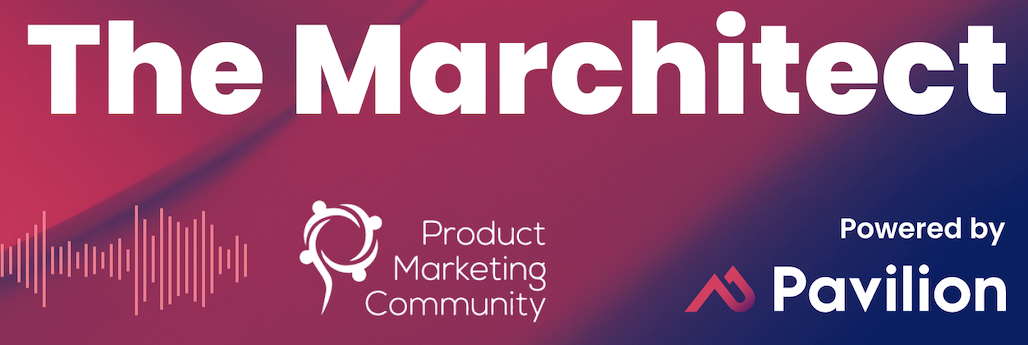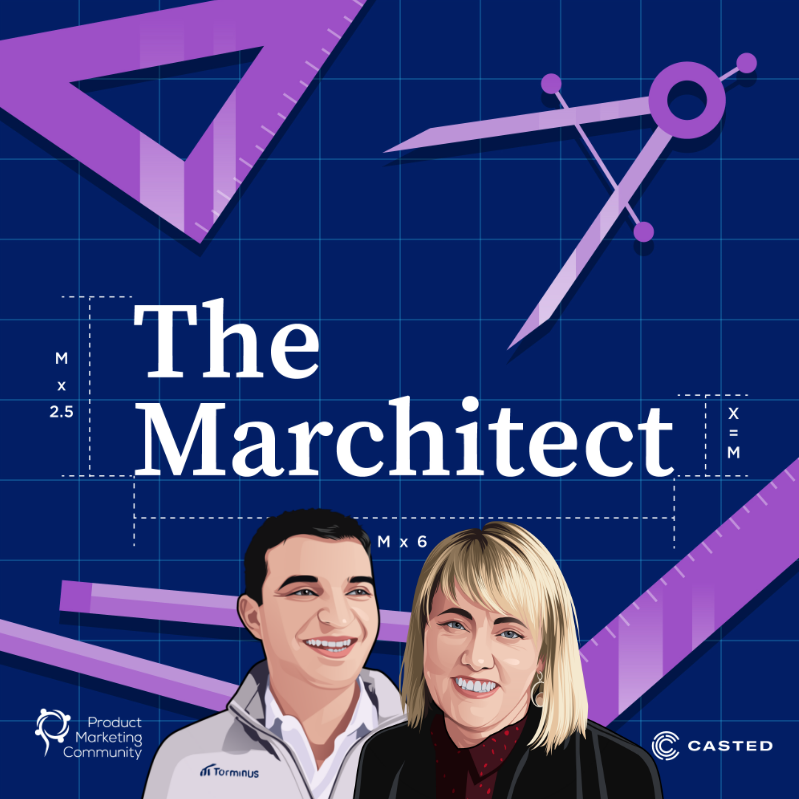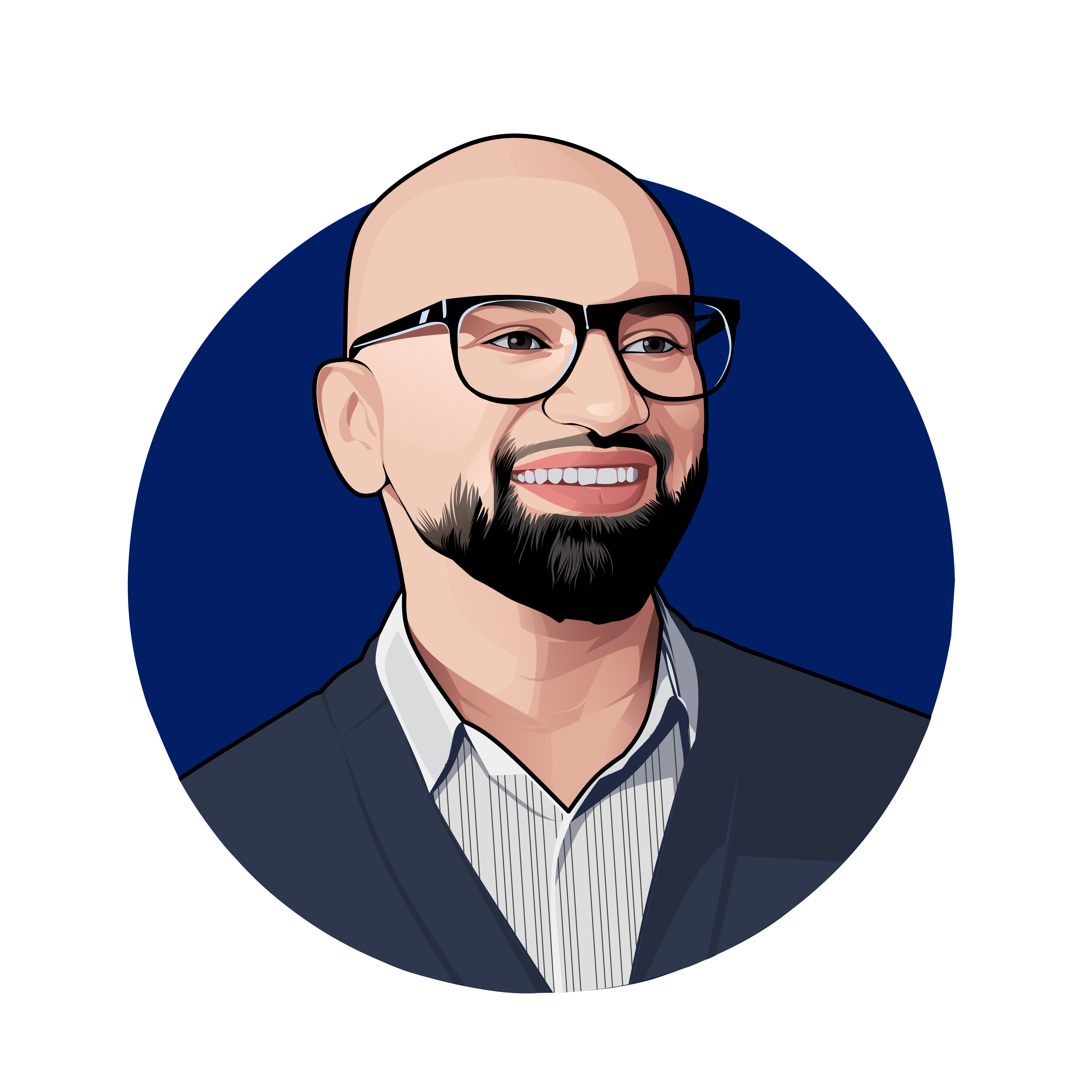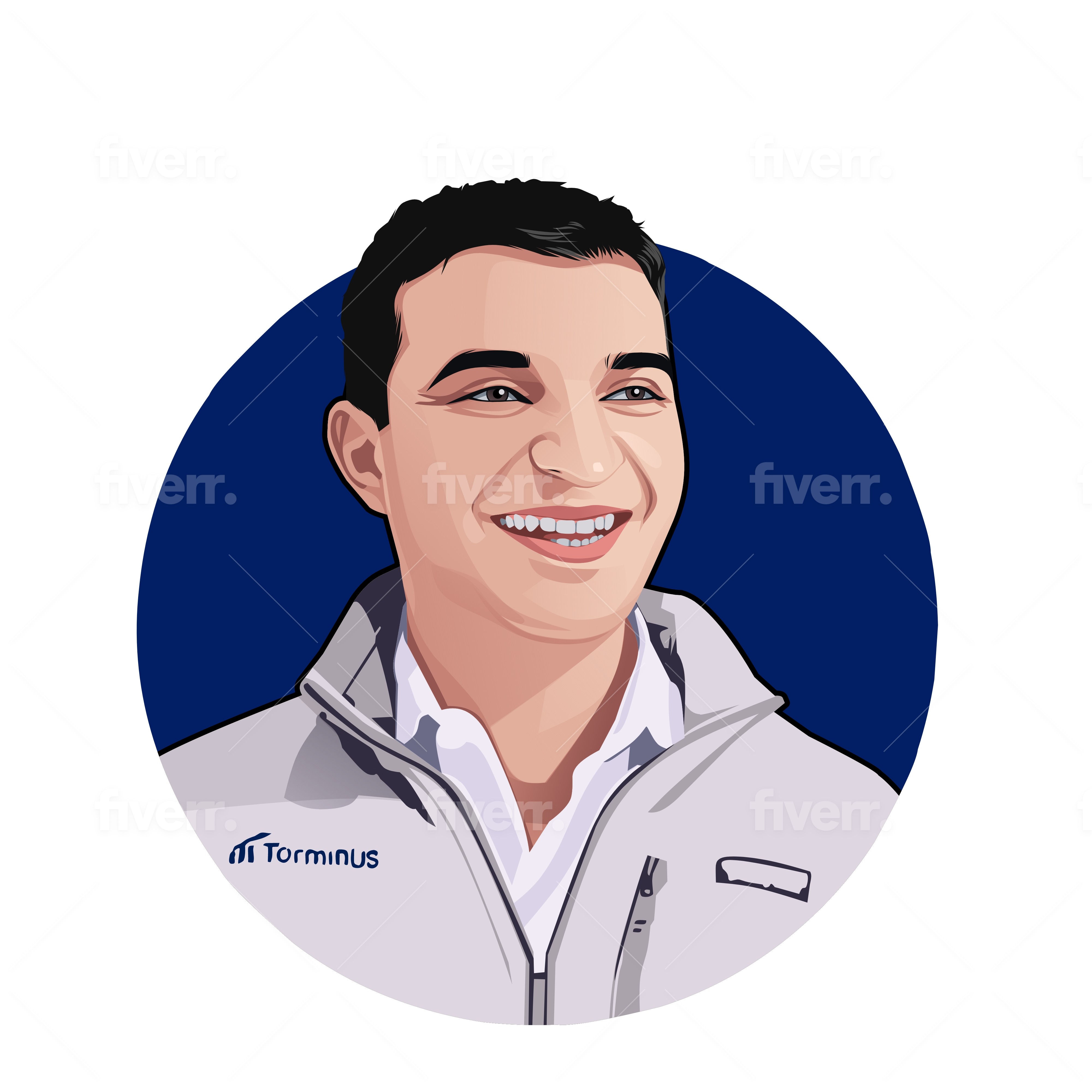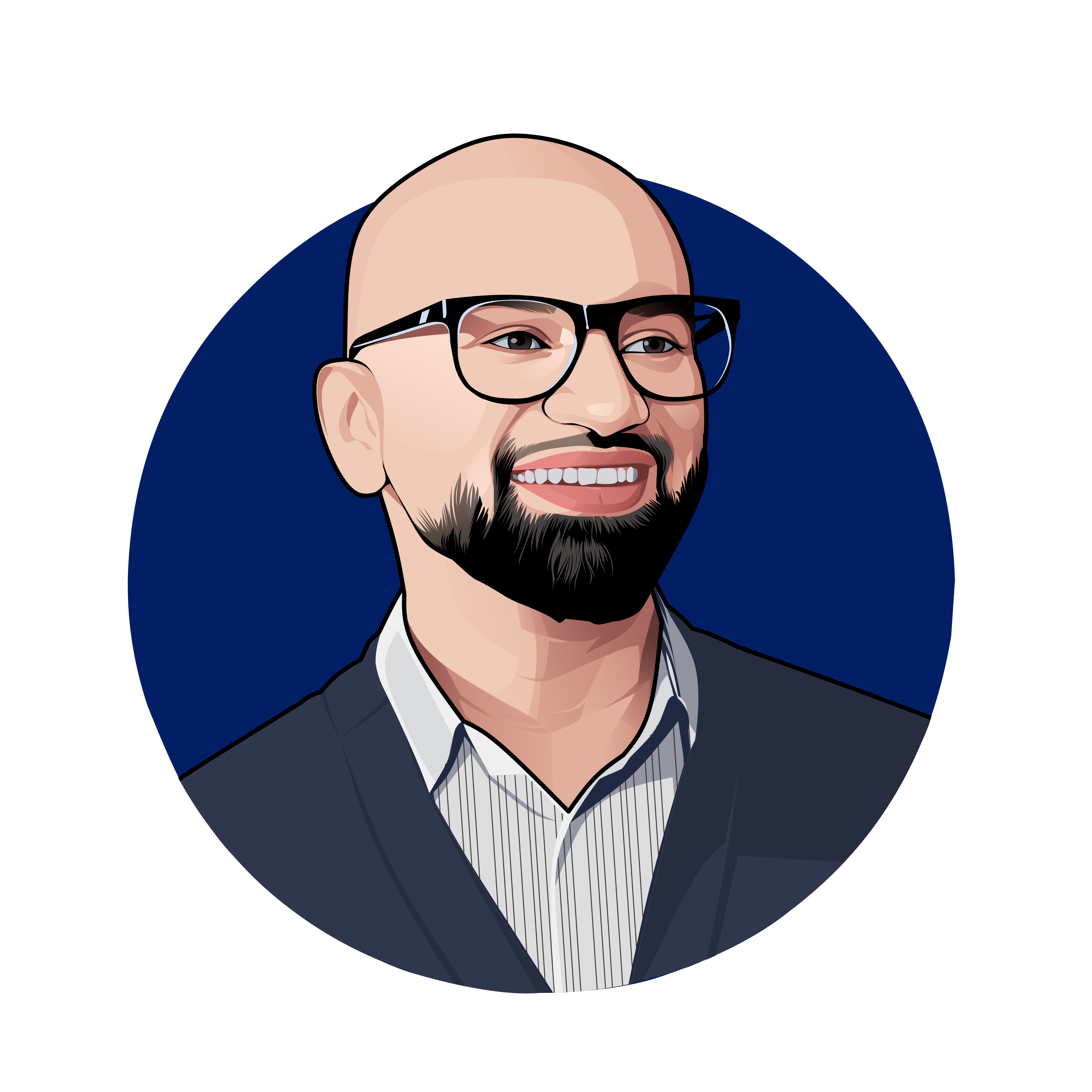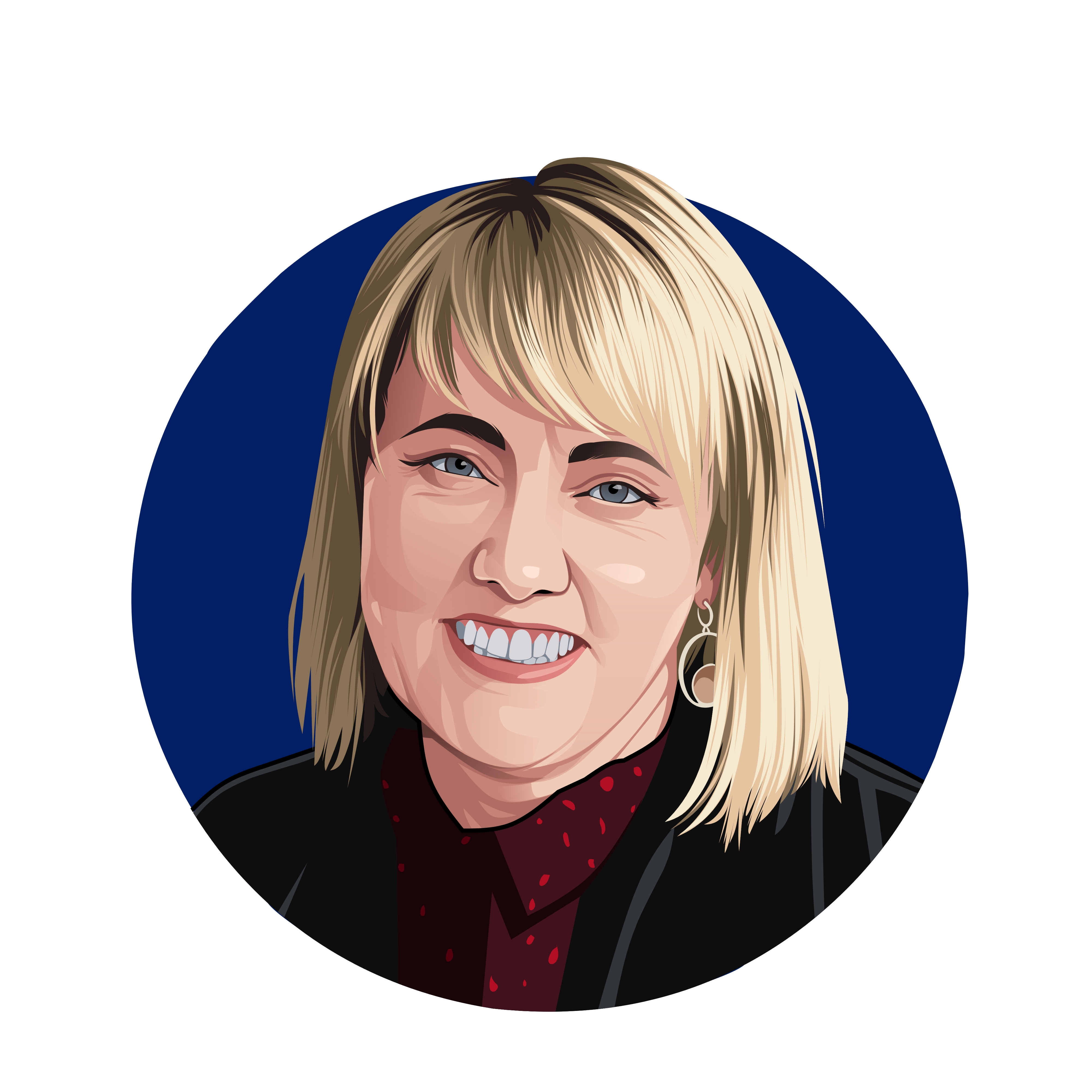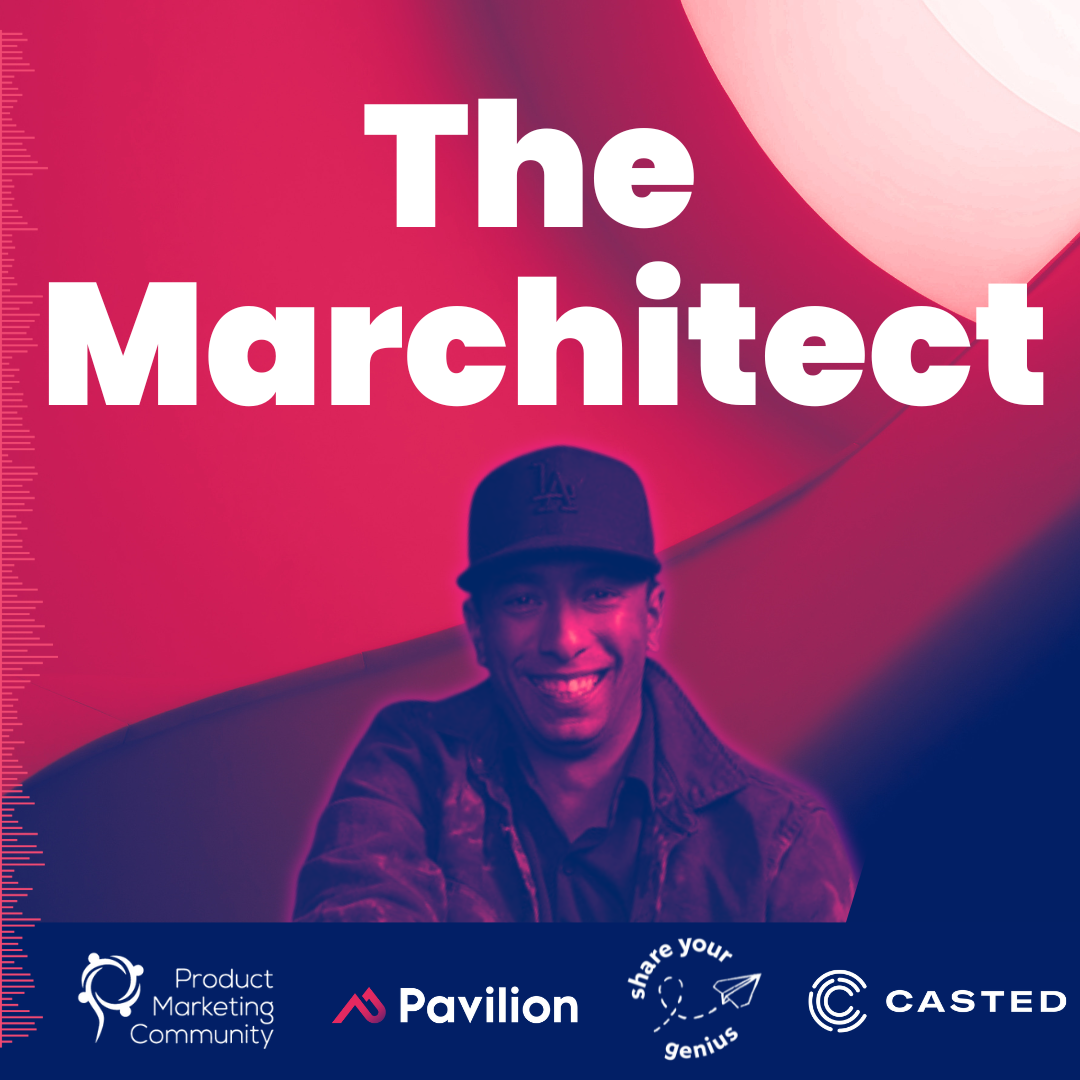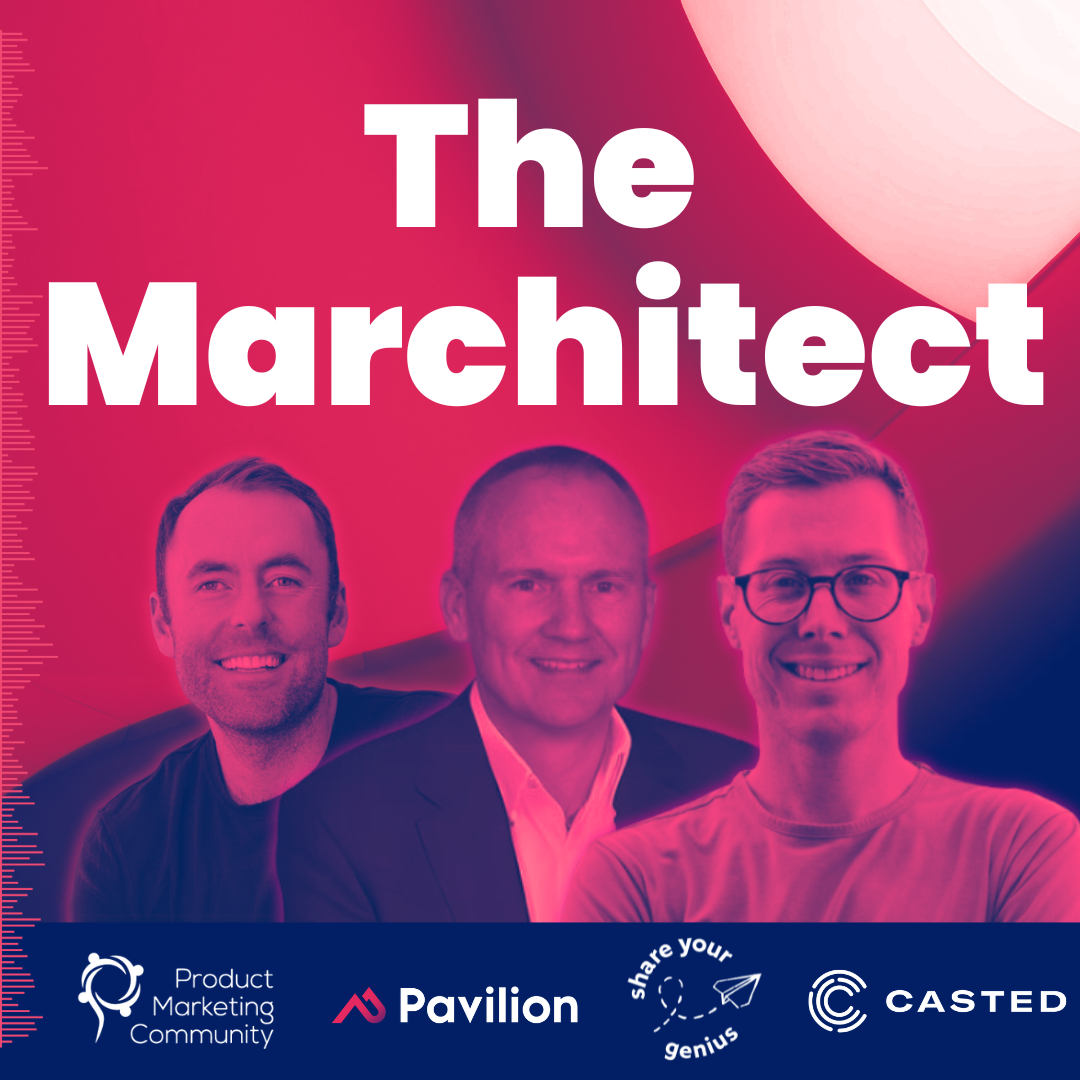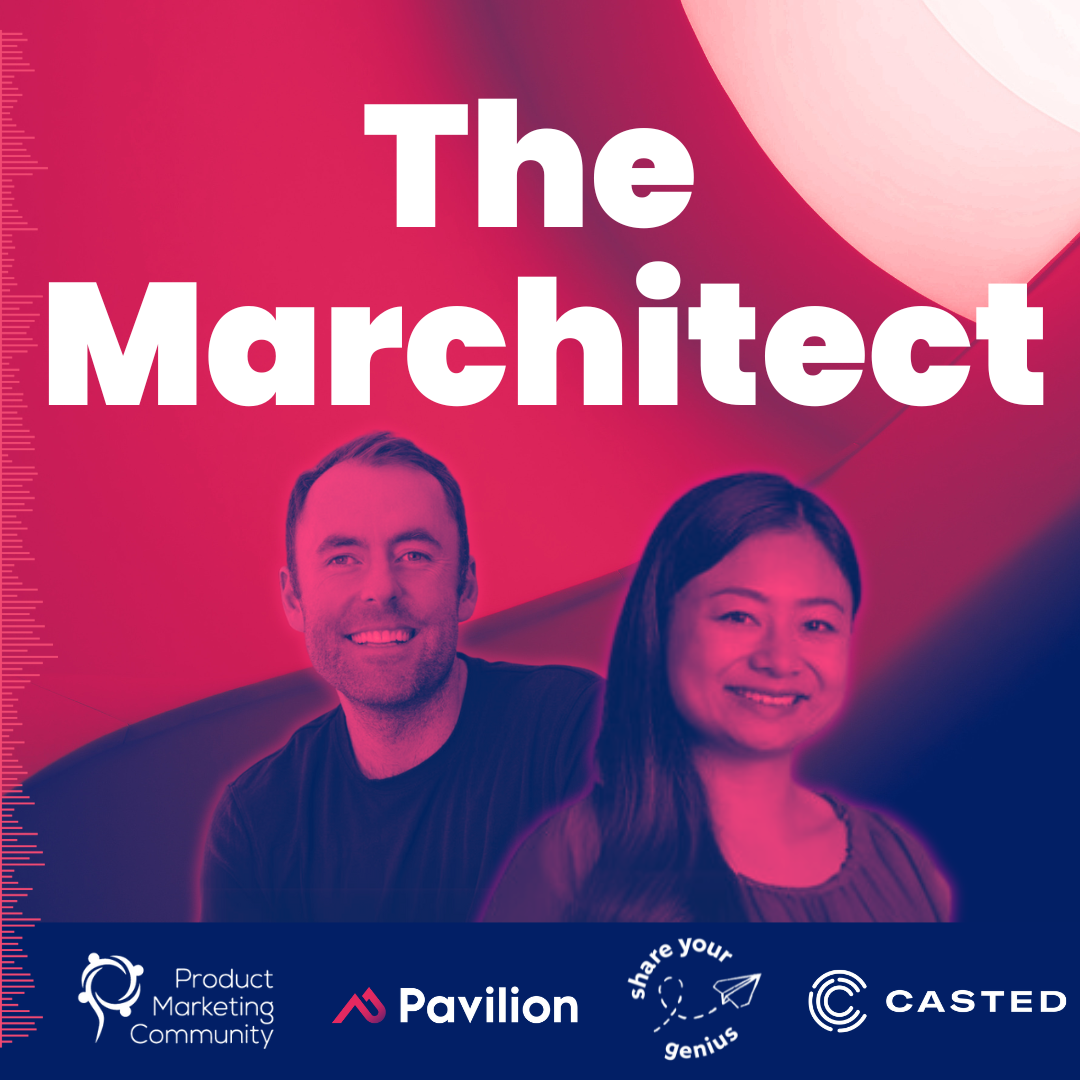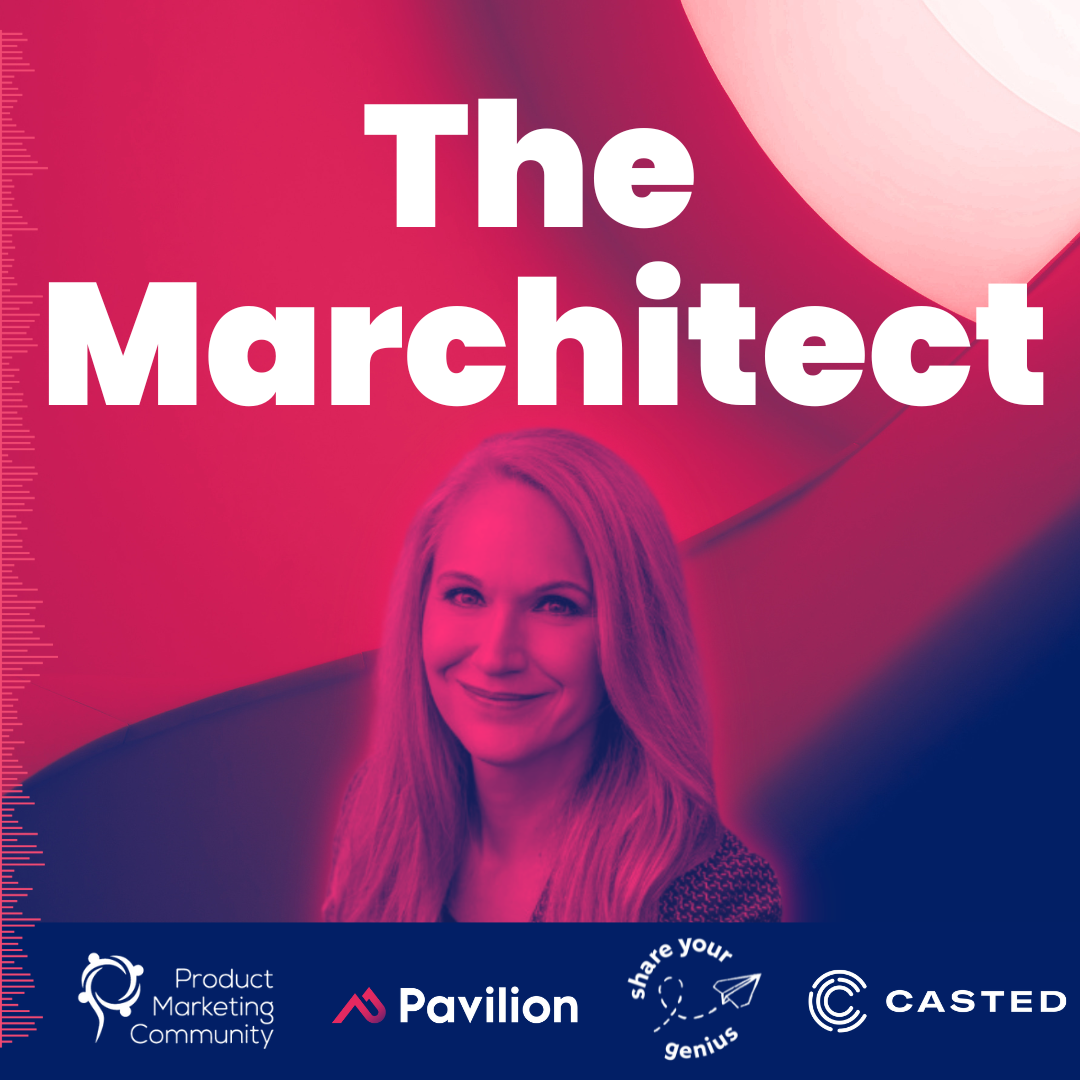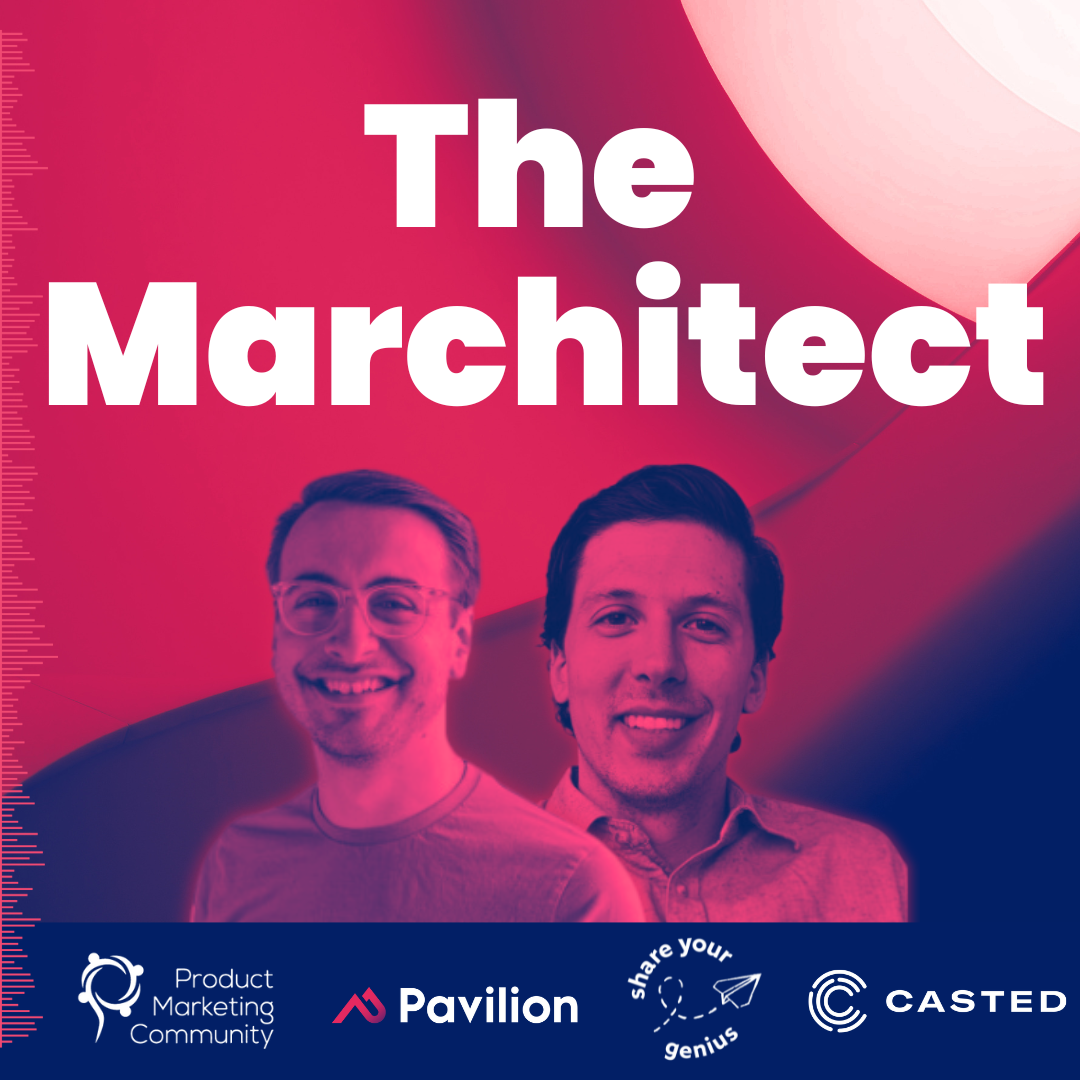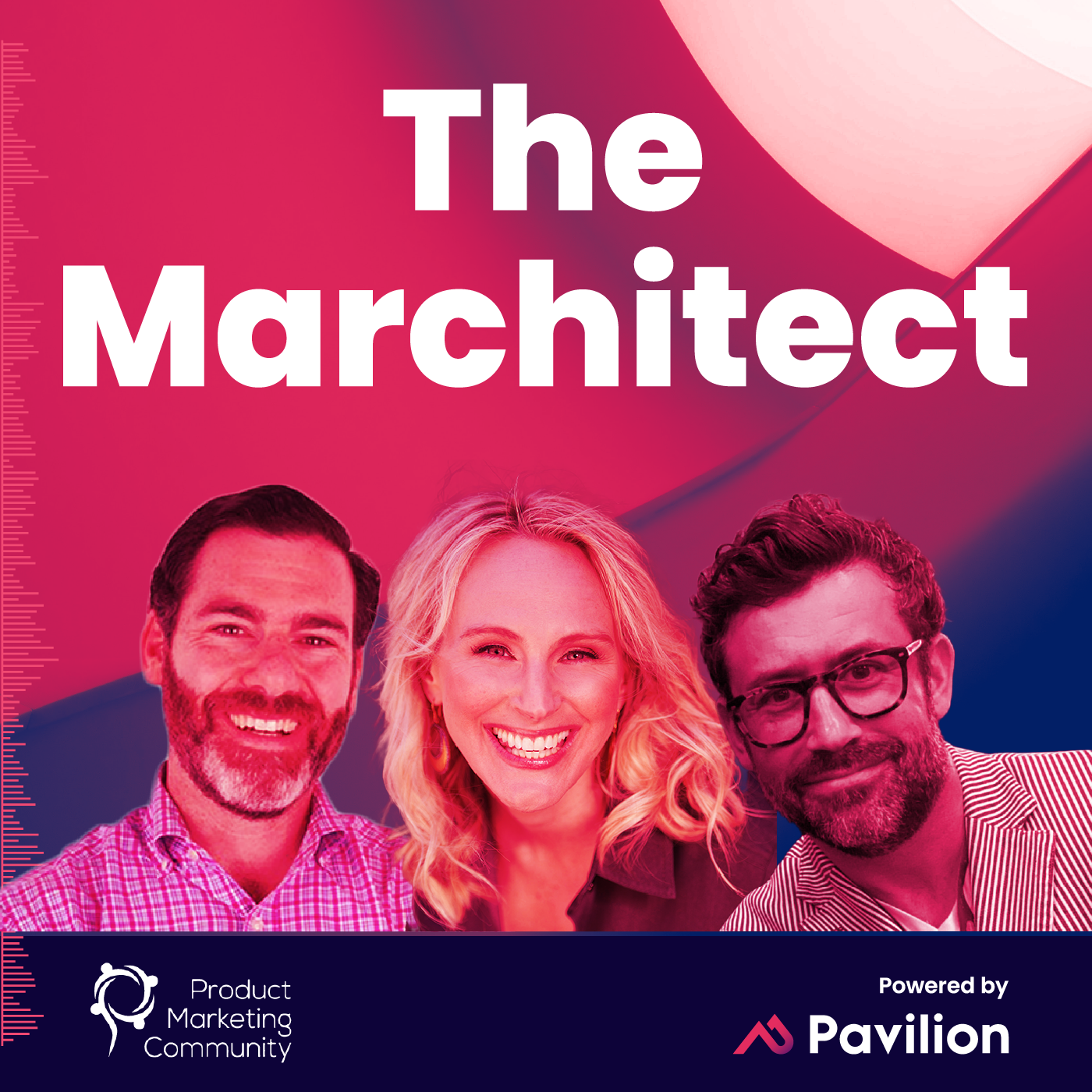Episode 8: You Don’t Have a Marketing Problem, You Have a Go-To-Market Problem (Winning by Design & Terminus)
- 0.5
- 1
- 1.25
- 1.5
- 1.75
- 2
Lindsay Tjepkema: The tide has turned, B2B buyers and sellers interactions have changed. Welcome to the Marchitect, a new podcast series for B2B product marketing executives. I'm Lindsay Tjepkema, CEO and co- founder at Casted, the first amplified marketing platform for B2B marketers and a proud partner of the Product Marketing Community. We are very excited to be bringing you this special series that focuses on amplifying the expert perspectives, insights, and opinions of this brilliant community. Each episode will feature in- depth advice from executives who will tell you how they built impactful teams, optimized go- to- market efforts, and enabled customer- facing teams. The Marchitect is an easily digestible way to learn from your peers as you aspire to be an architect for growth. Welcome and enjoy this episode.
Rowan: Welcome everybody. So excited to be here today with Sangram and Meg. And before I let these two wonderful people introduce themselves, I have to say, the most successful companies I know are built on strong go- to- market teams. However, many, many companies just don't get this. And through my numerous conversations with CMOs, CROs, product marketing executives in our own Product Marketing Community, it's really shocking to learn how many of their own CEOs think they have a marketing problem... It's always marketing, isn't it? When they actually have a go- to- market problem. And quite frankly, I've been thinking this for years, but Sangram has had the courage to come and say it. The buck stops with the CEO. They own go- to- market and of course the CMO and CRO are there to help them both galvanize and orchestrate to help them move and of course win, but let's get into it. Again, Sangram, Meg, why don't you introduce yourselves? Delighted to have you here. And then we'll dive into this crucial topic about GTM.
Sangram: Yeah. Meg-
Rowan: Meg, why don't crosstalk.
Sangram: ...we'll start with you.
Meg: All right. Well, first of all, Rowan, thank you so much, and Sangram, thank you so much for joining us today and congratulations again on the book. Right now I am head of strategic initiatives at Go- To- Market consultancy, even Winning by Design. So very much on the same page as Sangram these days, helping companies make some sense of that, but it has been my pleasure to be on this account- based journey with Sangram for some time. And I was remembering Sangram, I literally met you when I was in the early days of the account- based practice at SiriusDecisions back 10- plus years ago. And you were in the early days of Terminus and I got to visit you in Atlanta, in your office, literally with like three people and a dog.
Sangram: Yeah.
Meg: I'm kidding about the dog and-
Sangram: And a dog. Very important.
Meg: There you go. And that tells you how long both of us have been thinking about this. And it seems like our thinking about it has evolved in very much the same kinds of ways. So that's been fun, but to come at it from different perspectives on the market, but end up in a very, very similar place. And my perspective has been as an analyst, as a consultant, as well as as a practitioner in a couple of different roles. And I can't overstate the importance of getting your go- to- market right, because if you don't, everything else is an utter waste of time and money. So I'm excited to hear more Sangram, about what you're thinking about in the book. So I will pass it over to you.
Sangram: Sounds good, Meg. I still remember, again, this is my third book and the first book, Meg actually wrote the foreword for it. And I'm really, really grateful for that. I almost feel like you gave me a chance at that time, almost six or seven years ago to be in this field and try to do the things because you have been doing so well as an analyst, plus I don't think you've aged a bit, so that is fantastic. Being in this world, we feel like, oh, 10- plus years, but now I feel like yesterday, so that's amazing. For me, I was blessed around marketing and product, and getting acquisition to exec target in Salesforce. I felt like that was my first exposure to the idea of what go- to- market really means in a very different way, a very, very different way. As a matter of fact, talking to the Product Marketing Community, I recognize the value of product marketing. The whole Salesforce ecosystem, the cloud were run by product marketers. They were the GM of the cloud. So I actually started to appreciate the field of product marketing and understood a lot more then. Since then, I've founded Terminus. It's been seven years. Things have been really good. And along the way, I don't know how, but have authored three books. And this one, I'm truly proud of the research that have gone into this book. I mean, the first two books that was more of me thinking about it, more interviews and more conversation. But this one, I feel like it was much more research based, much more data based. And I'm excited to share the learnings from it.
Meg: Yeah.
Rowan: Thank you Sangram and-
Meg: How crosstalk that feel when you publish something, you were like," I know this is right. I know this is true." It's such a great feeling.
Sangram: Yeah. Especially the time with COVID for two years, I felt like with everything that's wrong about that, the good was you can pick up the phone and call anybody. I think that's really what COVID allowed us to do. And I totally took advantage of it. I literally picked up the phone and called Geoffrey Moore, who wrote Crossing the Chasm. I'm like," Hey, I'm researching this, I need your input." I called Brian Halligan. I'm like," I'm researching this, I need some input." So I think it really opened a lot of doors that I don't know if it would've opened before.
Rowan: Love it. And I appreciate the shout out to product marketers there Sangram, much appreciate it. We take all the love we can get. So as we get into it, indulge me for a quick moment, fill in the blanks. Meg, we'll start with you and then we'll go to Sangram. I am in marketing because...
Meg: I love it. And it doesn't get enough respect exactly to the point of the earlier conversation. And it's been my mission for a very long time that people should see marketing as the critical and strategic function that it is. And plus it's fun. I like this stuff.
Rowan: Love it. Sangram, I am in marketing because...
Sangram: I think marketers move the world. I got to use that. I have to use that. So there you have it. Marketers move the world.
Rowan: Love it. And let's stay with you for a quick second. My definition of leadership is...
Sangram: The word and the phrase that I've been using a lot in the last two years really has been belongship. I think if leaders can create a place for belonging where people feel like they belong, then I think you can have a great organization.
Rowan: Love it. Meg, my definition of leadership is...
Meg: I read a great quote recently from Henry Kissinger of all people. And it's that the task of the leader is to get people from where they are to where they have not been. And I love that vision because it's... And then there's another one that I read that said basically a great leader is somebody who takes more than their share of the blame and gives away more than their share of the credit. And I think that combination of vision and focus, just what you said, Sangram, on your team and helping them be successful and get to places they've never been, that to me is a great leader.
Rowan: Love it. Love it. All right, let's get to it. So Sangram, I'm going to turn this one to you. Speaking of go- to- market, why do great companies fail?
Sangram: That's it. That is literally the thesis of the book, right? The reason the book exists. If people don't remember anything of what I'm about to say after this, this two minutes of fed, remember this, and that this is data from McKenzie and others, which is less than 0. 04% of the companies make it to 10 million or more. Let me say that again, 0. 04. So we know, a lot of us know the stat that less than 1% of them even hit a million, but this is as you go to five, then go to 10, you actually... The number of companies who remain successful gets even less and less. As a matter of fact, I think VentureBeat put an article that called it the valley of death. Between 10 and 50 million it's called the valley of death. Anybody can do just search on it saying valley of death SAS businesses, and you will see that chart, where between 10 and 50 companies go there to die. Now, as a founder myself, starting a company is hard, getting to a million is hard. It's really hard. And to recognize and realize that after 5 million or 10 million, you might think, oh, I made it, we are over the hump, now we can survive. As a matter of fact, that's not true. Very few companies do. And the study from McKenzie and others literally went back to like, companies don't fail because their vision all of a sudden becomes outdated. They don't fail because they can't hire great people. Those were the two most common fallacies that we all have. We all could hire great people. The vision continues to be great, but they fail because the unsexy part of business, which is go- to- market, the companies never mature in their go- to- market process. And that really is why companies get into the value of debt and why I wrote the book.
Meg: So Sangram, tell me a little bit more about that. So you just mentioned a couple of different stages that you've been through as a founder and as a leader, right? How do you know what stage you're in? How do you know what part of the valley of death you might be heading for before you get there?
Sangram: Hopefully when people read the book, they would take that out. One of the frameworks in the book, we call it the three- piece framework, problem market fit, product market fit, and platform market fit. So those are the three stages of any business. Now here's is the kicker. And I think you both will appreciate this. I did not think that in the research I found out, I thought problem market fit would be anybody who just starts a company, right? And maybe in the first million, they did problem market fit. You could be a$ 20 million company and still be in problem market fit because you still haven't figured out the repeatable scalable way to drive your business. You still have top line growth, but your retention is not there at all. So you might still be getting more customers, but losing a lot more of them. So there are lots of companies out there who think they're growing fast, top line growth, and you see them on TechCrunch and all that stuff. And then they poof, they're gone. Because they still haven't figured out that use case that is repeatable and can move on. So the one stage is problem market fit. The product market fit, I think most of us are very familiar with where things are just moving. You know there's a use case that works, you can repeat it. You know how to get to that number almost 80% of the way. And now 20% is really trying to figure that out. But the third stage is really the interesting one. I feel like Geoffrey Moore really loved this stage when we did the research. The third stage is platform market fit. This is where your product gets to a point where it's selling. It's doing well, but at some point you're going to have competitors. Your existing customers are going to say," Hey, I need more from you." They're going to look for more feature, products, services from you. So you have to go from one product company to a platform, meaning you have more than one products and services to sell. But here's what happens really interestingly, you also expand on your market. Because until this point, your market is still the same. Let's just take Salesforce as an example. You start with CRM, problem market fit. They stayed in that for about 10 years before they got marketing cloud. They didn't go to a different cloud until they got CRM really dialed in. And then as they moved into a platform market, they have all these different clouds because they can support lot more different use cases and lot more different audiences. So this interesting part of the stages is problem, product, platform. You can't leapfrog it, but you have to stereotype it. And there is a value of debt. The companies die, not when they're in one of these stages, but in between these stages because there's transformation that's happening in between.
Rowan: And so-
Sangram: Is there... Oh, sorry, Rowan, go ahead.
Rowan: No worries. Just to reiterate. So step one is to really get a sense of which stage you're in and that's one of problem market, product market, or platform market. And then as it relates to these three stages, I'm assuming that there are different metrics associated to each of these three stages. Can you give us a sense of some of those metrics?
Sangram: Oh, absolutely. As a matter of fact, we created scorecards. You can go to themovebook. com to just download the scorecards. They're free, you don't even have to sign up, just go download it because what's interesting about that question, Rowan, I'm so grateful that you asked that question. Initially, we all are drinking the Kool- Aid of the SAS metrics that are on inaudible and all these places by the big companies, that have been super Uber successful. But what happens is not every company can get to it and not all metrics make sense. So for example, in the early part of your business, maybe in a problem market fit, you might be looking at just outbound opportunities, pipeline, revenue, basic metrics to start the business. But as you get to product market fit, what's going to be super interesting for you will be average deal size, how pipeline velocity, how quickly can you close more deals faster, right? You think about the size of the deal. Like are you able to go from 30K deal to 50K deal to 60K deal? Your win rates? So those metrics become way more important product market fit. And as you start thinking about platform market fit, this is where customer cohorts really make sense. So at this point, now you're looking at NRR and GRR. You're looking at revenue retention rates over 100%, but those metrics makes no sense to think about in a problem market fit. So what I want to empathize with everybody who gets to read the book in whatever stage of the business you are in, it's okay to be in the stage you are in, because it makes sense, but make sure you track the metrics that make sense for that stage. I've seen ton of companies trying to track and trying to be overly mature before they actually have the basic foundation laid out for them. So I'm glad you asked that question because one, that is one of the research thing we did is like you could be in a problem market fit for five years. So you can't really go to the extent of having thousands of customers. If you're not there, it's okay. You don't have to track. So what we have done on themovebook. com, we have created scorecards for each stage of the business. You can just simply download it and start looking at them.
Meg: Yep. So actually, let's talk a little bit more about the MOVE framework. I think for people who haven't yet read the book, since it's just hot off the presses or whatever accounts for presses these days, tell us about what the MOVE framework is. What does it mean? And also how can you use it to improve communication between and across the go- to- market team? What works to get to that CEO?
Sangram: Yeah. To get to CEO, right? First of all, you said go- to- market teams. And I wanted to clarify in the book that's one of the core part of the book is what's a go- to- market team? And one of the things that I learned for the most part is that in an ABM world, we have been talking about marketing and sales alignment and pulling it all together all along, like for the last 10 years that's what we've been talking about. But I'm realizing more often than not now that successful go- to- market teams have customer success very much as a starting point, not even the end point, but as a starting point. This is a core reflection in the book. If you are creating your ICP, your target audience, if you don't have your customer success as part of that go-to- market team, you're going to miss out. You're going to have revenue issues. You're going to have conversion issues. You're also going to have retention issues. 100%. We at Terminus had that. That was one of the big challenges we faced too. We did not have customer success early enough of the go- to- market process. And it burned, it hurt. And we are still going through the pain of that. And now customer success is just totally part of our go- to-market. So if your organization thinking about what my go- to- market team should look like, your revenue, go- to- market revenue team includes marketing sales and customer success. So I'm glad that you brought up revenue teams. And the second part is when we started the research, we looked at about 50 questions. We asked questions from who owns it, what keeps you up? How do you think about market? All these questions to all like Nick Mehta, CEO of Gainsight, to Brian, to Geoffrey Moore, tons of go- to- market leaders, CEOs, CROs, VCs, Scott Dorsey, every around the world. And what we realized, there are really four questions that it comes down to. And that's really what the MOVE framework come from is the four questions. Who should you market to? So that's the who question. What do you need to operate effectively? That's the operations questions. This is the core. This is the part that moves the company forward. The third question that every CEO is asking every day, which is when can we scale our business? When can we scale our business includes all the ratios of the business that drives the business forward. And the fourth one is where can we grow the most? Where can we grow the most? So that's expansion questions. The market, operations, velocity, and expansion. And Meg, what's interesting about this is for the three Ps, problem, product, platform, no matter what stage of the business you are in, the questions remain the same, but the answers are different. And that's what we go into the book is like, all right, you got the same four questions, but instead of Tam as an example, you might be looking at Tam in a problem market fit. In a product market fit, you might be looking at segments now, the use cases that are repeatable. In a platform market fit, the same, who should we market to? You're thinking about customer cohorts now. You're talking about a very small cohort of customer that are really the best customers for you and for your business. So do your answers keep changing, but the questions remain the same? And that was a really good moment as we were writing the book.
Rowan: Love it. So there's three stages. There's so much goodness here. I need to recap and go in chronological order just to keep things straight. There's three stages. Once you understand the three stages, there's associated metrics to those three stages. So you are what you measure, and there is different metrics for each of those three stages. Great. Then there's a framework, MOVE, market, operations, velocity, expansion. And there's four questions, critical questions that the go- to- market leadership team needs to ask off themselves to ensure that they're headed in the right direction and raise their focus. Who is this mystery go- to- market team who should be at the table to both ask the question and help answer the question?
Sangram: Yeah, I think that's in a way, the real question is who owns this mess in the organizations? Who really is ultimately responsible for it? And honestly, I was shocked. I was shocked to hear the answer. I did not go with this answer. I did not feel knowledgeable enough quite frankly to answer that question because we asked this question to everybody, all 50- plus people that we interviewed. I also wasn't sure if there is, is it one of those things where everybody's responsible? You get those answers and you're like, start scratching your brain like," No, if everybody's responsible, then nobody's responsible." All these things, but I was profoundly moved... I've used the move again. But profoundly moved when literally every one of the people, especially the CEO level, when NBCs said the same answer. And I did not expect that at all. Starting with Brian Halligan, he was the first one. And I asked," Who owns go- to- market?" And I was totally expecting him to say," Well, the corporate strategy and the CRO and the CMO, I own it." I'm like," Brian, you're the CEO of a public company, you got to have 100 other things to do. There's no way you're owning the go- to- market." There are only three things as a CEO I own. Vision for the company, I have to constantly articulate where are we going? Where are we going? Number two, culture. If we can't hire and can't retain a great culture, we won't be able to do anything we want to. And number three, the unsexy part that nobody talks about, but I'm thinking about it every day in his words is go- to- market. And he defined go- to- market for me. He said," Go- to- market is like a product." It's a constant iterative process. It's not something we go out in a two- weekend strategy session. That's vision casting. That's not what we do. Go- to- market is every week I'm thinking about, should we acquire a company? Should we hire new sales team? Should I launch a new product? Should we create partner ecosystem? Should we expand in Europe? These are all elements of go- to- market. And who else has a view in an authority to make those big decisions than the CEO? And as soon as he said it, after that, I talked to Nick of Gainsight, that 100 million in revenue, same thing. So regardless of public company to a$ 100 million company, us at 50 million, we are all the same. TK, Tim Kopp, CEO of Terminus, same thing. He owns it. So I was really shocked, the consistency in clarity. Now, here's is the kicker though, when I talk to the CMOs and CROs of their organization, they don't think so. They don't believe so because nobody's really articulating the definition of it. Nobody's articulating the ownership, what it means. So it's still very fluid in most organizations, but if you talk to the CEOs, in their mind, good CEOs, they know that they own it.
Rowan: And Meg, I'm going to turn this one to you actually. In all the engagements that you're a part of with, through Winning by Design, who are the typical stakeholders that you're dealing with as it relates to go- to- market? Is it consistent with what Sangram's saying? And you're allowed to say no.
Sangram: Of course.
Meg: Well, happily the answer is yes. I mean, generally speaking, you are not going to come in and make strategic changes to the way a company goes to market, especially in those earlier stages, Sangram to your point, without involving the CEO, but even with very large companies, it gets to the CEO, it goes, it's CEO, CRO, CSO, CMO, and then head of customer success, whatever title that person may have. Product is in there too, by the way, right? Because there's such a critical component of that whole go- to- market effort. But no, by all means the CEO is the one who is the decider in the end, right? And you don't have that person on board. You're not going to see that change succeed. And I think that leads me then to a question for you Sangram. What's your encouragement? If you've got somebody who's not the CEO reading this book, what are you going to recommend that they do to start to put some of these principles to work in their organization?
Sangram: In the book, what we have done is for every stage of the business, I think at a minimum, we want people to self- identify where they are, what stage, that's the one question. It will bring so much clarity in your executive team, if everybody can say," Oh, we are in the problem market fit or product market fit or platform market fit." What we have done in the book is we have given a series of question for alignment questions, for transformation questions, and strategic questions. So no matter what role you have in the organization, you literally can take those nine questions, regardless of what stage, nine different questions. You take those nine questions saying," As an executive team, let's talk through that. Let's talk through what are our strategic questions so that everybody gains clarity around it. Then let's talk about aligning. How do we align our executive team with this idea, depending upon what stage you're in?" But most importantly, if you all believe that we want to transform our business, here are the three transformation questions that are very specific to this stage. So hopefully that will be a starter. And I believe anybody who's listening to this right now, we all have an opportunity, especially if you're in product marketing and you're learning about this and talking about it, you're at the forefront of this. You are a change maker. So you have the ability to ask these questions. And it's a really powerful way to get clarity in your organization.
Rowan: Meg, I don't know if you have another question, but I have to jump in very quickly and going back to my former question, if you wouldn't mind, as it relates to stakeholders and go- to- market syndrome, we talked about the CEO being the owner. What is the role then of the CMO and the CRO?
Sangram: Oh, it's good. We actually created a grid in the book because when we started doing the research, I honestly thought, quite frankly, the CMO would be the owner, or will we talk about it? But it became clear it was the CEO. And then in the grid, we have the CRO, we call them the orchestrators. And the CMO they're called the galvanizer. That's the role of both of these roles. The CRO, ultimately, if you're the right CRO, you typically would either have sales, all the revenue, right? The sales and customer success reporting to you. So you need to orchestrate all these things with marketing all the time. So you become the orchestrator. If you're a CMO, you're the galvanizer. You have to bring everybody together and say," This is where we are driving." You actually have the greatest responsibility to bring clarity to the organization. And we all know CMOs. Everybody's like," Well, it's CMO's fault if the sales are not happening, the product is not running, all these things." So CMO gets the burnt of it. This is your chance to take a step back, bring your executive team together and say," Folks, we are going to start talking about and figuring out what stage we are in and start acting in that stage and ask the questions that will help us transform our business. It will be a change- making conversation that you can have as a CMO.
Rowan: Inspiring. Absolutely inspiring. Meg, I don't know if you have any other questions on your end?
Meg: No, just thanks, Sangram. I love how you're thinking about this. And we're very much on the same page in terms of the kinds of things that companies need to really do to thrive and grow in the current climate and any climate for that matter. So thanks for giving people a way to talk about it and definitely look forward to hearing good news about the book going forward. And Rowan, back to you.
Rowan: Thank you Meg. Sangram, come Monday morning, what is your recommendation to the CEO, CMO, CRO, the GDM leaders at the table? They're sitting down, they're saying," All right, this MOVE thing makes sense for us." What is the first step that they need to take to get moving?
Sangram: The first step in my view for every organization is to just communicate the stages and align on the metrics that will define success for you. A lot of times, people don't define clear success metrics. Therefore, people are moving in 100 different directions. This should give you clarity in order to say," Hey, we're in this stage of the business, these are the five most important metrics that we should focus on." Get everybody incentivized, get everybody excited about it. Get everybody aligned around it. You will just see a great momentum happening in your organization, just because you are clear enough where you are and where you want to go.
Rowan: Love it. Thank you. Thank you, Sangram. Thank you, Meg, for co- hosting. Always a pleasure to have you as part of the Product Marketing Community. And if you want to better your odds of success and win, move, read the book, talk to Sangram and go have a chat with Meg as well at Winning By Design. Those folks can really help you get structured in the right way and provide some clarity to your direction. I know this first hand. Thank you so much, folks. Have a good one.
Sangram: Thank you.
Meg: Thank you.
DESCRIPTION
Most companies just don’t get it. The most successful companies are built on strong go-to-market teams. It’s time to stop assuming it’s a marketing problem and get to the root: Your CEO owning go-to-market. And our guest today is courageous enough to walk us through it with insight from his new book. Rowan Noronha, VP Product Marketing and Founder at Product Marketing Community, Megan Heuer, VP Strategic Initiatives at Winning by Design, Sangram Vajre, Chief Evangelist at Terminus, discuss the questions and stages every company should be aware of in regards to their go-to-market strategy. What we discussed: Understanding why great companies fail MOVE framework and its 4 questions knowing who owns go-to-market
